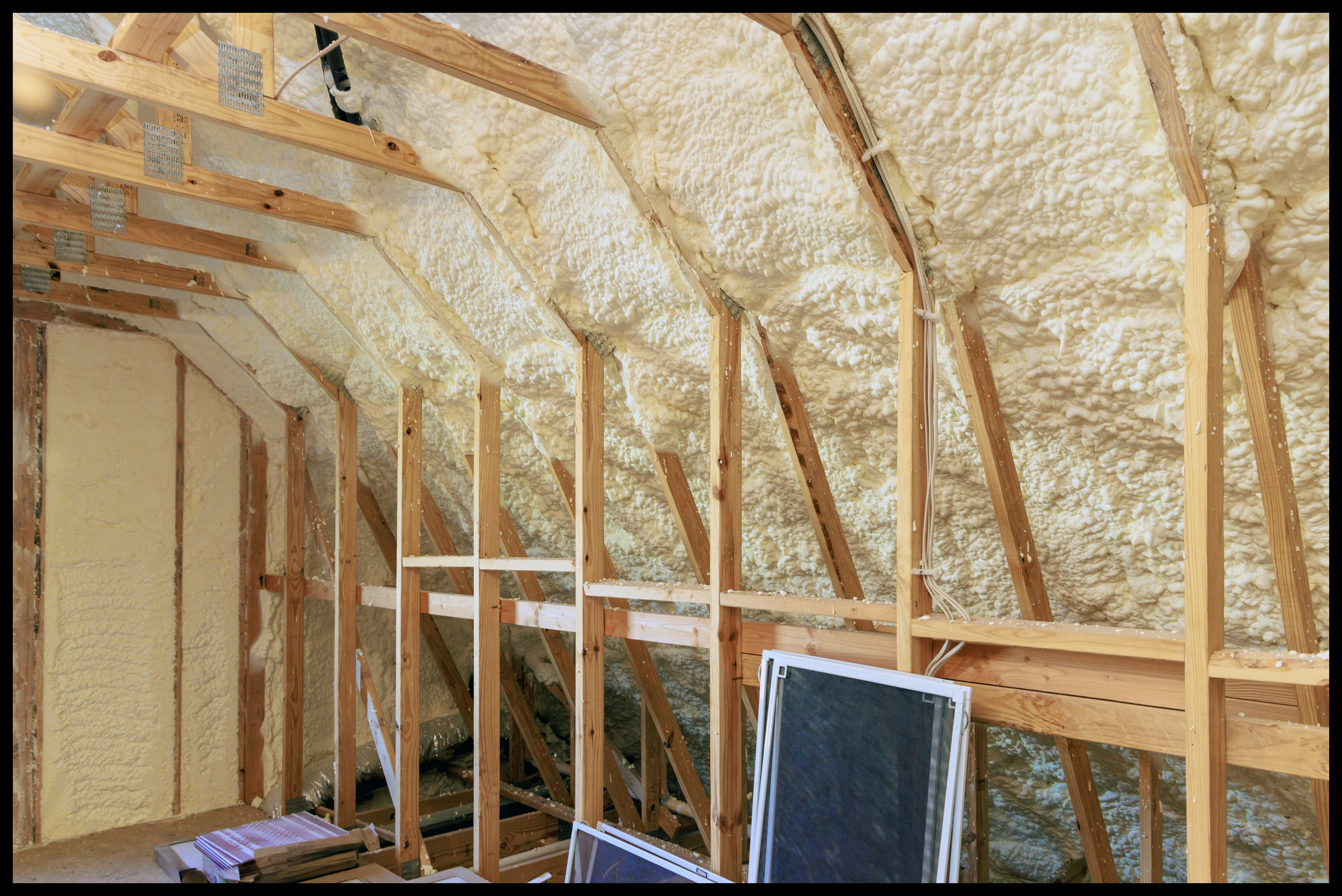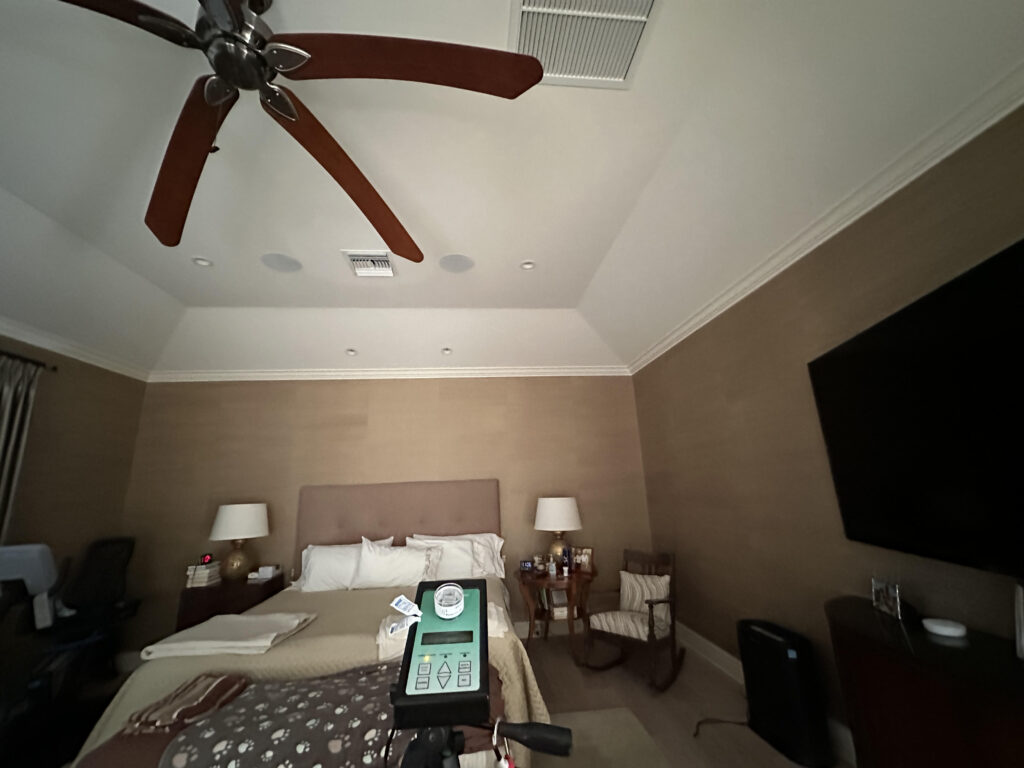Introduction
Is your home’s insulation silently contributing to mold growth and increased humidity levels? Spray foam insulation has gained popularity for its energy efficiency and air-sealing capabilities. However, many homeowners are unaware of the potential moisture problems it can introduce when not properly installed or managed. This article explores how spray foam insulation can increase mold and humidity in your home and offers solutions to prevent these issues.
Understanding Spray Foam Insulation
What Is Spray Foam Insulation?
Spray foam insulation is a versatile insulating material that expands upon application, filling gaps and sealing spaces where air might escape. It comes in two main types:
- Open-Cell Foam: Lightweight and less dense, it’s permeable to moisture but effective for soundproofing.
- Closed-Cell Foam: Denser and more rigid, it provides a superior air barrier and is resistant to water.
Benefits of Spray Foam Insulation
The appeal of spray foam insulation lies in its numerous benefits. It significantly enhances energy efficiency by reducing heating and cooling costs through decreasing air leakage. Its exceptional air-sealing capabilities fill cracks and crevices, providing an airtight seal that traditional insulation materials often can’t achieve. Additionally, spray foam insulation contributes to noise reduction, dampening sound transmission between rooms and from the outside.
While these benefits make spray foam an attractive option, it’s essential to understand the potential downsides, particularly concerning moisture and mold.
How Spray Foam Insulation Can Lead to Mold and Humidity Problems
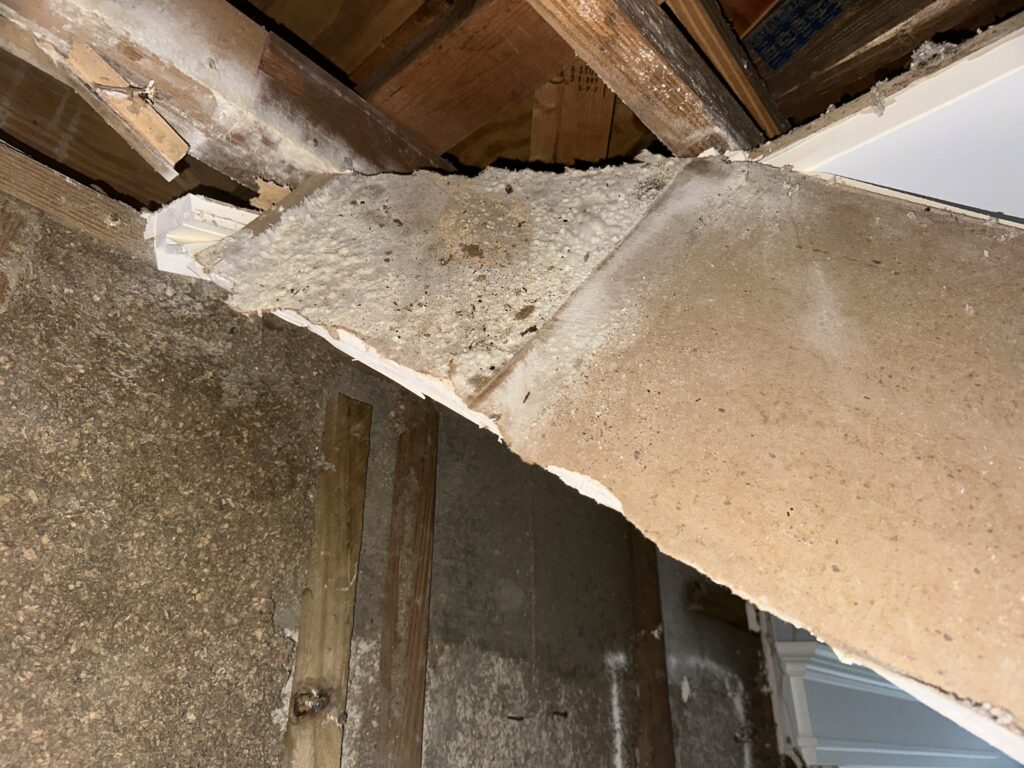
Moisture Trapping
When moisture gets trapped within walls or attic spaces due to improper insulation, it can condense and accumulate over time. Condensation forms when warm, moist air meets cooler surfaces, causing water droplets to develop. This moisture can saturate building materials, leading to rot and mold. Wet insulation loses its effectiveness, further exacerbating the problem by allowing more moisture to penetrate and creating a cyclical issue that’s difficult to resolve without professional intervention.
Thermal Imbalance

Incorrect application of spray foam insulation can lead to uneven insulation, causing temperature differences within your home’s structure. Areas with inadequate insulation become cooler, attracting moisture as warm, humid air moves toward these cold spots. This thermal imbalance not only reduces the comfort level within your home but also promotes condensation and mold growth in damp, cool environments.
How Humid Attics Can Cause Ducts to Condensate
High humidity levels in the attic can lead to condensation forming on your HVAC ducts. When warm, moist air in the attic comes into contact with the cooler surfaces of air conditioning ducts, the moisture in the air condenses into water droplets on the ductwork. This process is similar to how a cold drink develops condensation on a hot day.
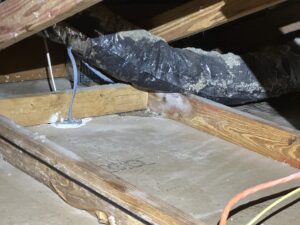
Consequences of duct condensation include:
- Water Damage: Dripping condensation can damage insulation, ceilings, and walls.
- Mold Growth: Moist environments promote mold and mildew on and around the ducts.
- Reduced HVAC Efficiency: Wet insulation is less effective, causing your system to work harder.
- Higher Energy Bills: Increased strain on your HVAC system leads to higher operational costs.
By dehumidifying your attic, you can prevent condensation on ducts while protecting your home from moisture damage (More on this below).
Signs of Mold and Humidity Caused by Spray Foam Insulation
Noticeable Indicators
- Mold Spots: Black, green, or white patches on walls, ceilings, or insulation material.
- Peeling Paint or Wallpaper: Excess moisture causes adhesives to fail.
- Warped Wood: Doors, windows, or flooring may distort due to humidity.
- Smell: Extensive mold issues usually produce a “mildewy” or “musty” smell within the attic and/or home.
Humidity Symptoms
Beyond visual cues, humidity issues manifest in other noticeable ways. Persistent condensation on windows is a typical symptom, as excess moisture in the air condenses on cooler glass surfaces. Musty odors that linger despite cleaning efforts suggest mold presence, and walls or floors might feel damp to the touch. These signs indicate that humidity levels are higher than normal and that moisture is accumulating within the home.
However, humidity symptoms in a home may not always be easily noticed. Slight, nuance elevated moisture levels can go undetected by homeowners. It may take an experienced assessor using moisture meters to moisture map a home and detect these subtle increases in moisture content. Professional assessments can reveal hidden moisture problems that are not apparent through casual observation. For expert moisture assessments, consider contacting Full Spectrum Environmental, who specialize in detecting and addressing moisture/humidity issues in homes.
Health Symptoms
The health of your household can also be affected by mold and humidity problems. Increased instances of allergies, such as sneezing, coughing, or nasal congestion, may occur without a clear cause. Respiratory issues like shortness of breath or asthma exacerbation can develop or worsen. Some individuals might experience skin irritation, including rashes or itching, which are often linked to mold exposure.
Preventing Mold and Humidity Issues
Proper Installation Practices
The foundation of preventing mold and humidity issues starts with proper installation. Hiring certified professionals ensures that spray foam insulation is applied correctly. Experts understand the correct mixing ratios and application techniques, reducing the risk of errors that lead to moisture problems. They use high-grade foam materials and adhere to building codes and manufacturer guidelines, which is crucial for both performance and safety.
Dehumidifying the Attic

From all the homes we’ve assessed, we strongly recommend—and believe it should be required—to install dehumidifiers in the attic. Especially when spray foam insulation is applied.
As building science experts, we have found that controlling humidity levels in the attic is crucial for preventing mold growth and moisture-related problems. A dehumidifier actively removes excess moisture from the air, maintaining optimal humidity levels.
Installing a dehumidifier in the attic can:
- Prevent Mold Growth: By keeping humidity levels low, mold spores lack the moisture they need to grow.
- Protect Structural Integrity: Reduced moisture minimizes the risk of wood rot and structural damage.
- Improve Air Quality: Lower humidity levels decrease the concentration of allergens and pollutants.
- Enhance HVAC Efficiency: Dry air allows your heating and cooling systems to operate more efficiently.
Regular Home Inspections
Periodic home inspections are essential for catching issues before they escalate into significant problems. Conducting moisture assessments using moisture meters can detect hidden dampness in walls, floors, and ceilings. Visual inspections allow you to look for signs of mold, insulation degradation, or water intrusion. For a thorough evaluation, hiring professionals who specialize in home inspections can provide peace of mind and expert recommendations.
What to Do If You Already Have Mold or Humidity Problems
Assessing the Extent of Damage
If you believe that spray foam insulation is causing humidity and mold in your home, it’s essential to identify how long this issue has been occurring and assess the extent of the damage. Understanding the severity helps determine the most effective remediation approach and prevents further deterioration of your home’s structure and indoor air quality.
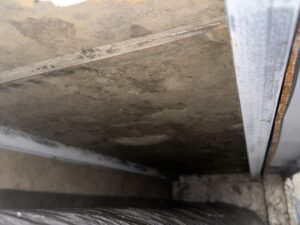
Identifying the Duration and Severity
- Professional Inspection: Engage a certified inspector or building science expert to conduct a thorough evaluation. They use specialized equipment like moisture meters to detect elevated moisture levels that aren’t apparent to the naked eye.
- Moisture Mapping: Professionals can create a moisture map of your home, pinpointing areas with high moisture content. This process reveals how far the moisture has spread and which parts of your home are affected.
- Visual Signs: Look for indications such as discoloration, peeling paint, or warped materials, which suggest prolonged exposure to moisture.
Range of Issues and Solutions
Depending on the extent of the damage, solutions range from simple to extensive. For minor issues, adding a dehumidifier in the attic can control humidity and prevent mold growth. Improving ventilation with fans or vents and regularly monitoring moisture levels also help. Moderate damage may require removing and replacing small sections of mold-affected insulation and drywall, treating areas with professional-grade mold inhibitors, and sealing any gaps allowing moisture intrusion.
In severe cases, prolonged condensation might necessitate the full removal and replacement of interior walls and ceilings due to moisture penetrating into wall spaces. Comprehensive professional mold remediation becomes essential, including cleaning HVAC duct systems, and installing dehumidification.
Professional Remediation
For a long-term solution, professional remediation is often necessary. Mold remediation experts have the equipment and expertise to safely remove mold and restore affected areas. They can assess the condition of your insulation to determine if it needs repair or replacement. Addressing underlying issues, such as ventilation and moisture problems, is essential to prevent recurrence. Professionals can provide guidance on improving your home’s moisture management strategies.
Conclusion
Spray foam insulation offers significant energy-saving benefits but can lead to mold and humidity problems if not properly managed. Understanding the potential risks and implementing preventive measures like professional installation and adequate ventilation allow you to enjoy the advantages of spray foam without compromising your home’s health. Regular inspections and prompt attention to any signs of moisture issues are key to maintaining a comfortable and safe living environment.
Protect your home from hidden moisture problems—schedule a free inspection with our experts today!

